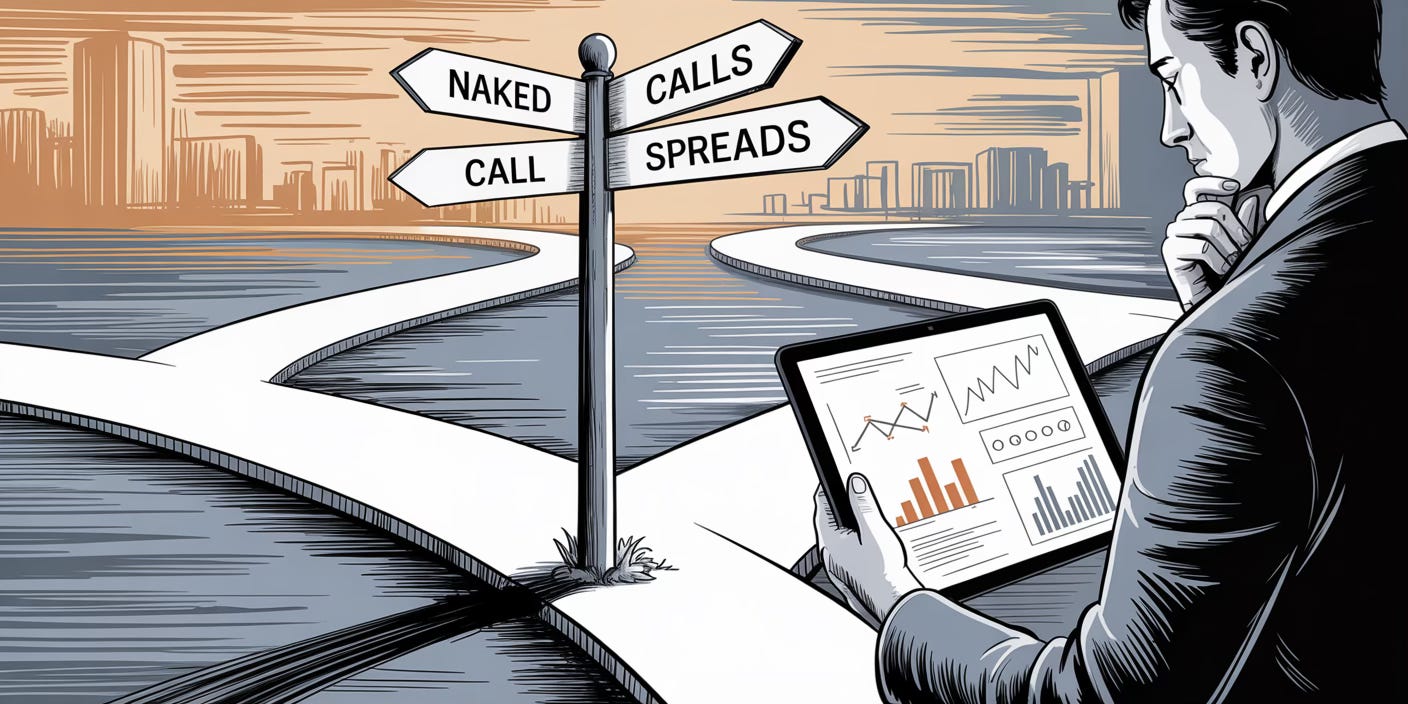Is it Better to Buy Naked VIX Calls or Call Spreads?
Which is better for hedging against tail risk?
When stock markets crash, volatility doesn’t just rise—it explodes. The CBOE Volatility Index (VIX) often doubles or even triples during crisis periods, offering one of the few instruments that move sharply against stock portfolios.
In March 2020, for example, the S&P 500 plunged –34% while the VIX spiked +260%. Such convex behavior makes VIX options a cornerstone of institutional tail-risk hedging.
Yet not all volatility hedges are created equal. Two popular approaches—buying naked VIX calls and buying VIX call spreads—both profit from volatility surges, but they differ drastically in cost, payoff shape, and portfolio efficiency. Understanding when to use each can determine whether your hedge cushions a drawdown or quietly bleeds capital.
Which Is Better?
For most investors, VIX call spreads deliver superior premium efficiency and scalability. They achieve roughly comparable protection at 40–60% lower cost, according to multiple backtests. Because most volatility hedges expire worthless, controlling bleed is essential for long-term portfolios.
However, naked VIX calls remain indispensable when your goal is unbounded convexity—the kind that transforms a 1% portfolio allocation into a double-digit gain during black-swan events.
Practical Hedging Framework
1. Strike and Expiration Selection
Naked Calls:
Choose 20–30 delta calls (≈ 10–20% above spot VIX).
Use 30–90-day expirations—far enough to survive calm periods, short enough for convexity.
Avoid buying after VIX > 25 or VVIX > 90; wait for calm regimes.
Call Spreads:
Pair strikes ≈ 10 points apart (e.g., 20/30 or 25/35).
Avoid buying after VIX > 25 or VVIX > 90; wait for calm regimes.
2. Exit Rules
Take profits once calls appreciate 2–3× initial premium; VIX peaks fade quickly.
Don’t hold through vol mean reversion—VIX spikes are short-lived.
3. Hybrid Approach
You can also combine both styles:
70% in call spreads → systematic low-bleed hedge.
30% in deep OTM naked calls → pure crash convexity.
This “barbell” approach mirrors professional tail-risk funds.
Conclusion
Both naked VIX calls and call spreads hedge tail risk—but they serve different objectives.
Choose naked calls when you seek pure, explosive convexity against catastrophic events.
Choose call spreads for steady, budget-controlled insurance that cushions 10–20% equity drawdowns without destroying long-term returns.
The optimal solution lies in combining them: use call spreads for baseline protection and naked calls for the “doomsday” convex kicker. Hedge when volatility is cheap, sell when fear peaks, and always remember—the best tail hedge is the one in place before the tail appears.





